How the Tented Ceiling Became Design’s Most Theatrical Flex — And How You Can Realistically Bring the Idea Home
Here's how designers create tented ceilings to add softness and movement to rooms — and why you should, too


If you've ever wanted to add a bit of drama to any room in your home, you'll find that few design ideas are as effective as tented ceilings. A spectacle of whimsy, surprise, and delight, there is no denying it looks great, but how practical is this design idea in a home setting?
Tented ceilings are created by cleverly securing and draping fabric across the ceiling (and walls, depending on the look you're after). Oozing with design flair, they can make a whimsical statement while softening the harsh lines of a room, or act as a clever and cost-effective way to conceal unsightly surfaces, such as certain renders or popcorn ceilings.
You can even consider tented ceilings as a stylish curtain trend: extending textiles to the fifth wall to create a cocooning effect. But how practical is it long-term? Below, we've broken down everything designers say you need to know about this stylish design idea, from the best types of fabric to the rooms it works best in.
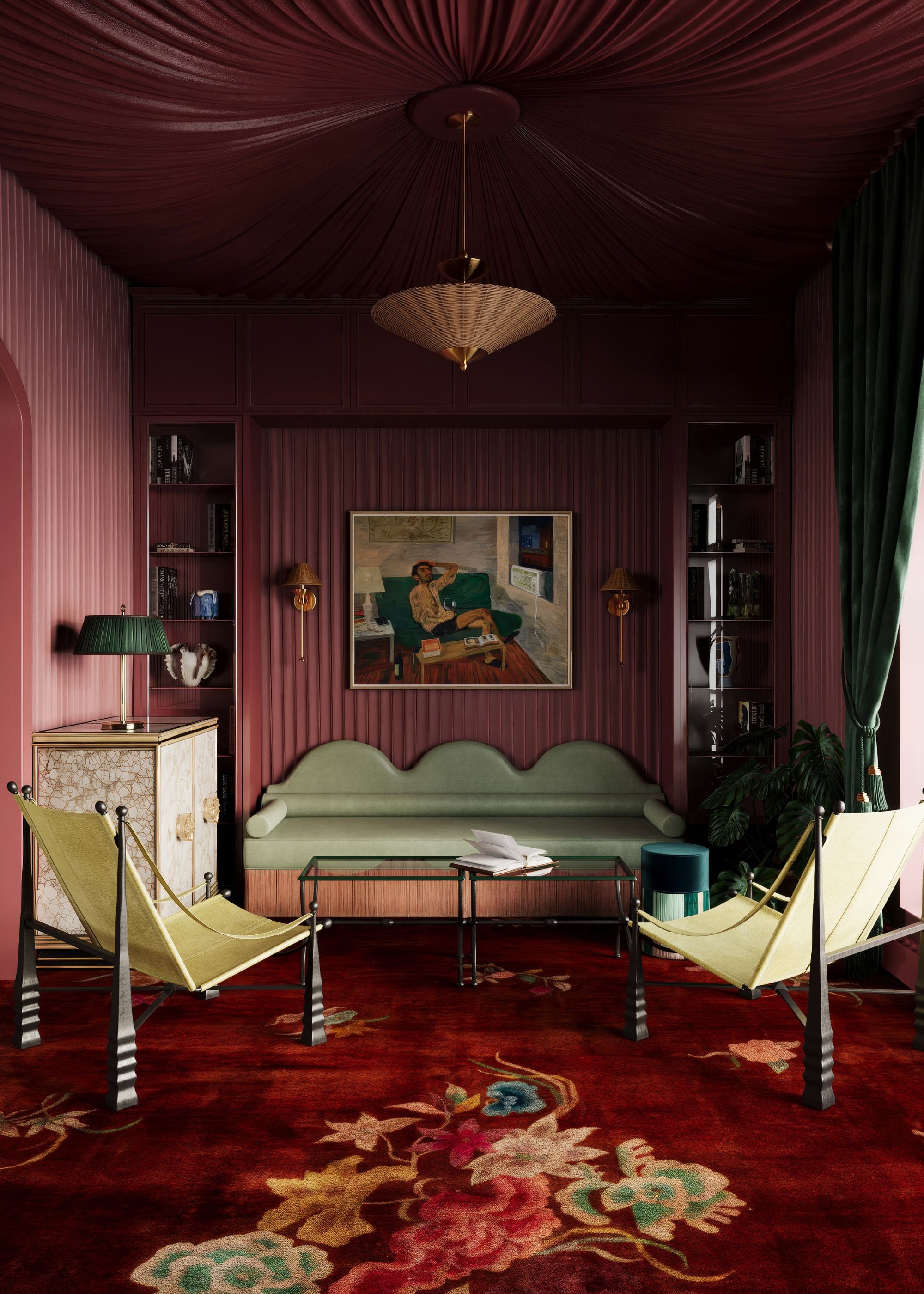
This tented room feels moody and sophisticated with the rich color palette.
"A tented ceiling immediately transforms the mood of a space," explains interior designer Katharine Pooley. "It's inherently romantic to be enveloped by soft folds of fabric overhead, and so I find they work beautifully in spaces designed for casual comforts rather than formality: bedrooms, garden rooms, or studies."
This ceiling decorating idea immediately softens a space, and makes it feel more cocooning, adds designer Harriet Slaughter, who agrees that bedrooms are one of the most effective rooms for a tented ceiling. "It is an inexpensive but very effective way to add lots of fabric into a space without the expense of textile walling or fabric wallpaper," she adds.
Not only do tented ceilings offer ample visual interest, but they also boast practical qualities. "Adding textiles in any capacity always helps with acoustics, so a tented canopy or ceiling in a bedroom immediately adds that gentle, padded feel that is particularly lovely during a British winter," continues Harriet.
Discover some of the best tented ceiling ideas below.
1. Make a Statement in the Dining Room
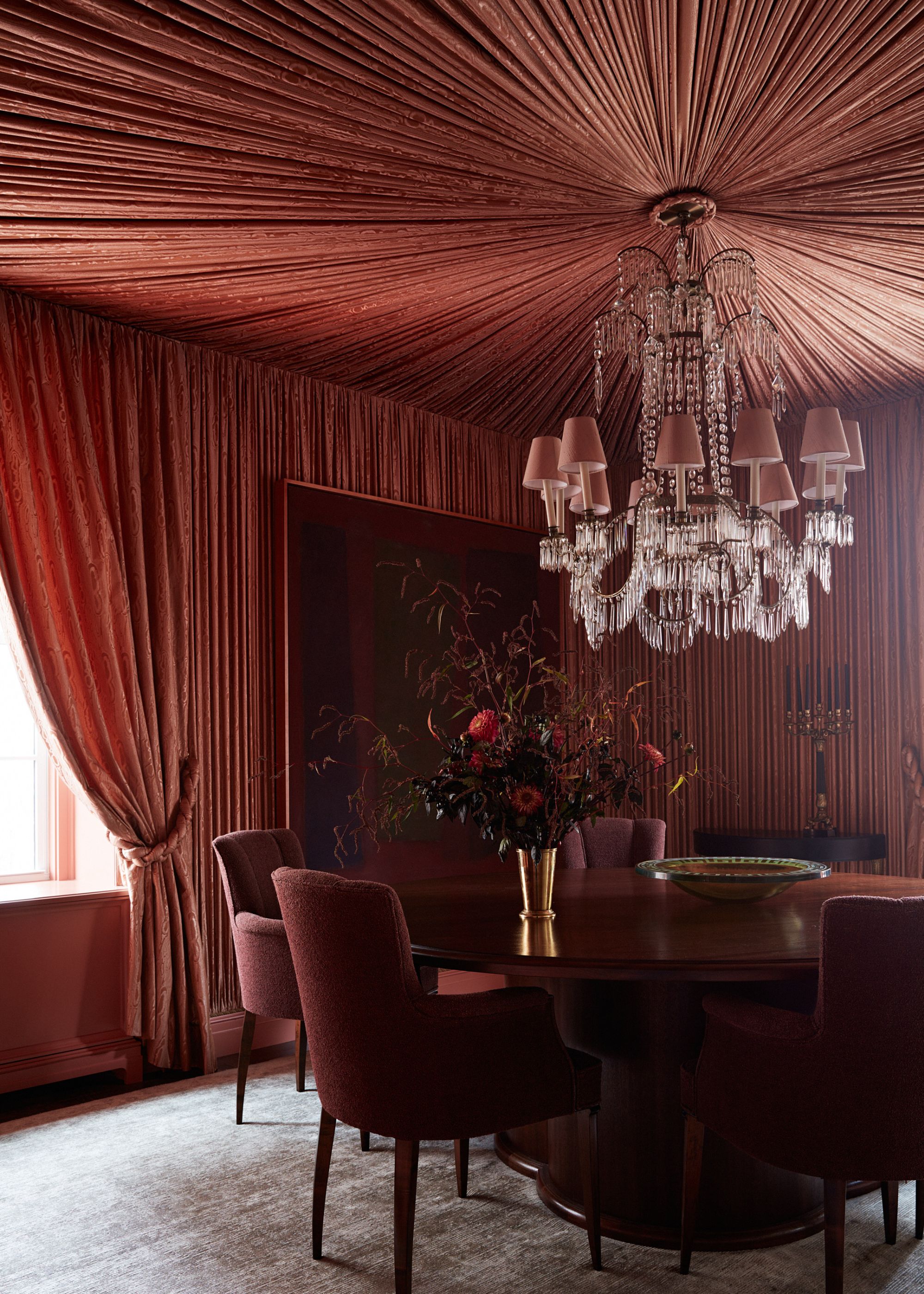
Here, a faux silk moire was used on the ceiling, which creates a dramatic and elegant look.
This dining room feels every ounce opulent with its tented ceiling, which cleverly creates a color-drenching effect with the fabric, which continues across the walls and curtains. "We did a lot of research looking at precedent imagery, such as Babe Paley’s famous tented living room at the St. Regis, and then I tried to modernize it," explains interior designer Josh Greene.
"I used a faux silk moire that was actually an apparel fabric, so it was way more cost-effective," he adds. "Also, I knew I wanted the tenting to be really tight, so I wanted something strong but also thin and pliable."
2. Add Softness to Your Sleep Space

This bedroom offers a more minimalist take on this tented curtain trend, with a neutral color palette.
A tented ceiling can make a wonderful addition to bedrooms, adding softness and an ethereal quality. "For this room, we chose a hand-dyed wool crepe, a fabric with a naturally irregular grain that subtly refracts light," says interior designer Alessandro Moriconi. "Its texture carries a softness that feels almost atmospheric."
"The textile acts almost like a soft architecture: it blurs the limits of the room, absorbs harshness, and turns the ceiling into a living, responsive surface," adds Alessandro. "The folds catch the daylight, shifting throughout the day like the sea across which the room opens."
It introduces shadow, movement, and thickness, he explains, "transforming the space into something intimate and cocooning." And, "Most importantly, it heightens the sensory experience — you don’t just see the room, you feel it. It brings warmth, softness, and an emotional dimension that paint could never offer."

Alessandro Moriconi creates spaces shaped by emotion and memory. He reveals the beauty of each place through subtle contrasts, sculptural lines, and curated selections of objects and furniture. From Tuscany to Monaco and New York, his work explores a contemporary art of living where luxury and comfort are anchored in the history and spirit of a place.
3. Create A Whimsical Bed Canopy
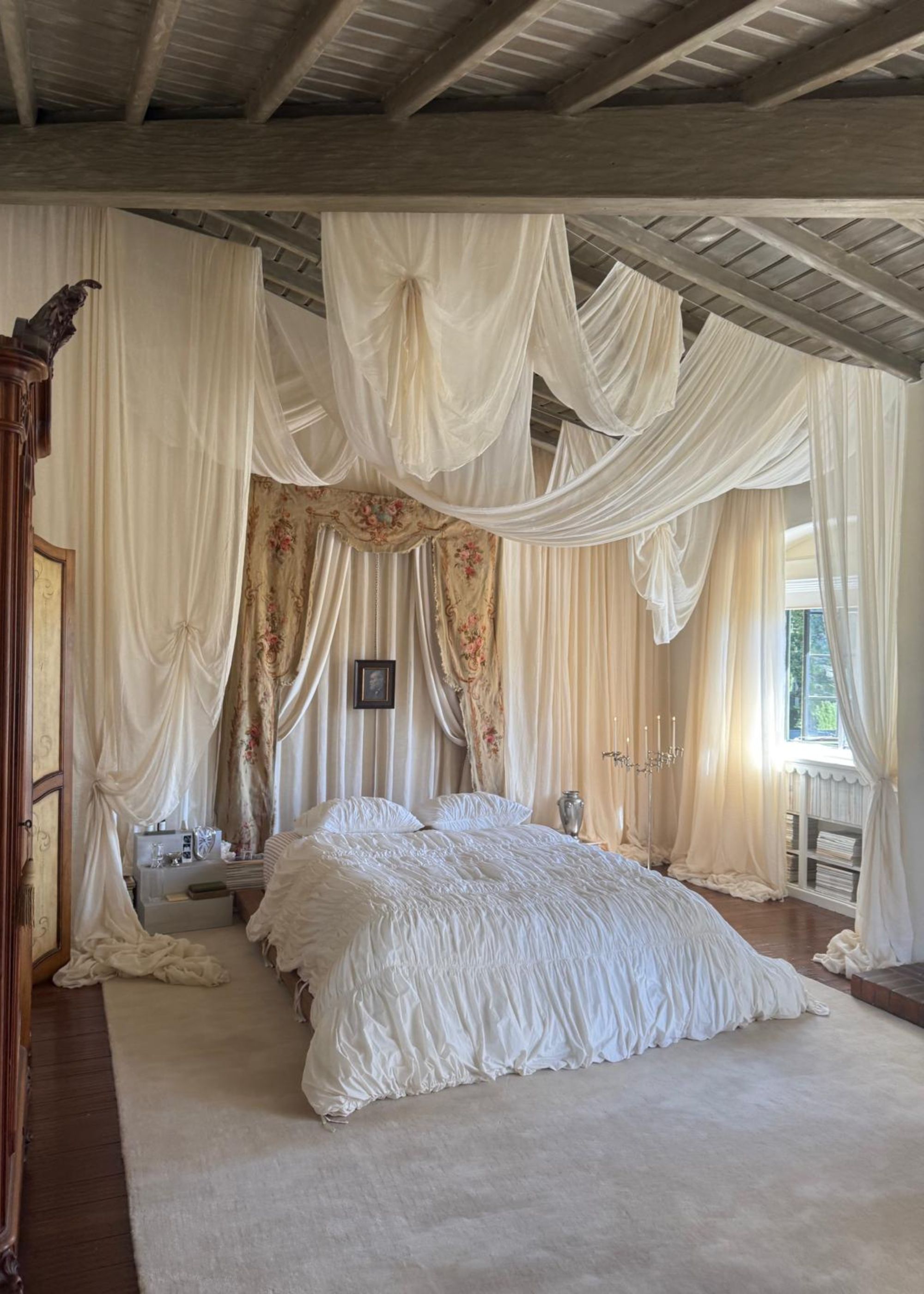
The fabric artistry in this bedroom transforms the room into a dreamy sanctuary.
Textile designer Mia Sylvia created this dreamy canopy bed in the home of stylist Marco Zamora. Created using a lightweight cotton, the look is layered and soft, offering a relaxed take on tented rooms.
"The canopy was created by hanging the cotton fabric over discreet tension wires installed above the bed," explains Mia. "The wires hold the fabric in place securely while allowing it to fall naturally, giving that relaxed, effortless style."
Commenting on the fabric used, she notes: "It has soft, fluid folds similar to silk, and its translucent quality allows light to pass through beautifully". What's more, when the room is lit artificially, "it diffuses the glare to a soft glow."
4. Choose Rich and Moody Colors
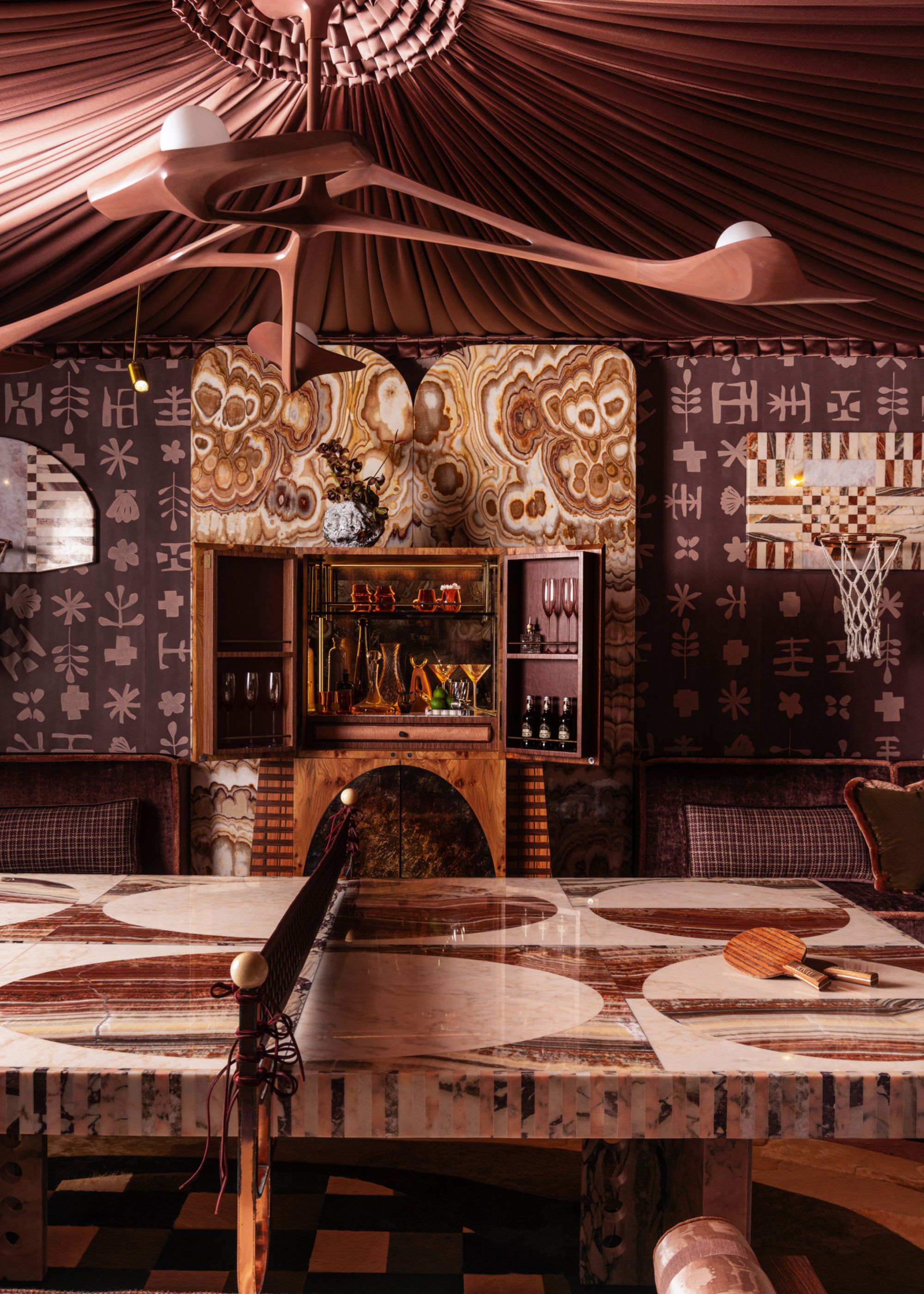
Here, a moody plum ceiling gives the maximalist space a cocooning feel.
Tented ceilings often employ dark color schemes that add sophistication and depth, much like the plum tones in this 'rec room'. "The room was designed to be a super-sexy, sophisticated private games club and cocktail bar inspired by exclusive venues around the world," explains designers Monica Santayana and Ronald Alvarez of MONIOMI Design.
"The tented ceiling was chosen specifically to make an immediate, high-impact statement and to envelope the entire space in a rosy warmth, making the room feel more intimate and sensual," they add.
While dark paint colors are a go-to way to add richness to a room, extending the same hues to ceiling fabric adds a textural feel. "It effectively softens the room's edges and helps establish the intended sensual and cocooning atmosphere that a simple coat of color on the ceiling could never replicate," the designers say.
5. Embrace a Cloud-Like Look With Neutrals
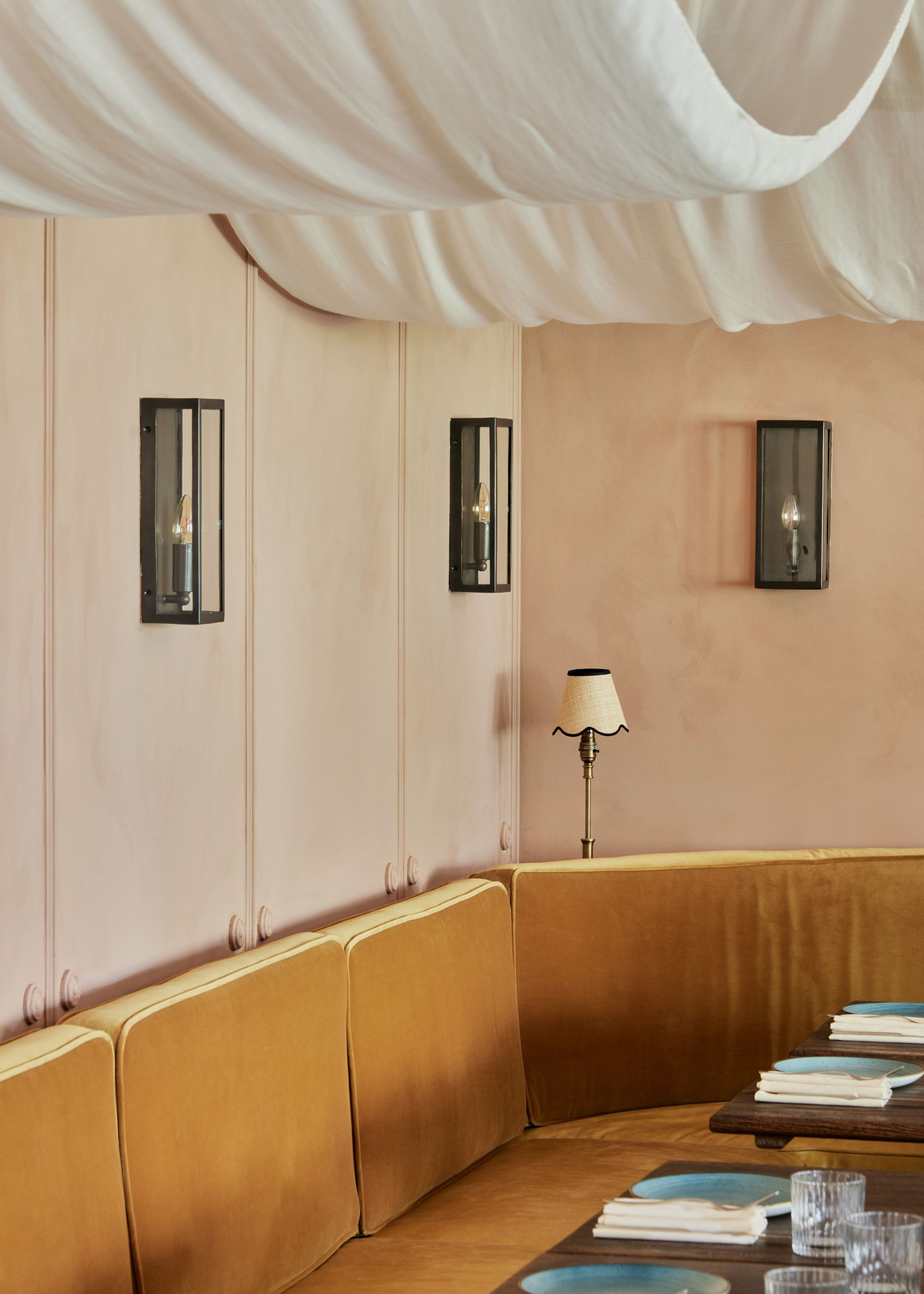
Soft, billowy fabric is a wonderful way to keep your tented room feeling light and airy.
While rich and moody hues fill a room with drama when used on the ceiling, light neutral color schemes add softness and create a more delicate look. In the London-based Indian restaurant, Kachori, design studio Fare Inc. opted for a lightweight linen to create the draped ceiling, inspired by the tented desert camps of Rajasthan.
To lean into a light and airy look, designer and founder of Fare Inc., Annie Harrison, recommends choosing a semi-sheer fabric in well-lit rooms. "If you'd like to use it over a skylight, source a fabric with semi-sheerness so that natural light can filter through it, yet is robust enough to hold a trim without sagging or weighing down the end panels too much," she says.

Annie Harrison is a London-based interior designer and the founder of Fare Inc., a design studio established in 2019. Fare Inc.’s portfolio encompasses a diverse range of projects, including Michelin Guide restaurants, boutique cinemas, and private residences across London and the UK. Annie is known for her ability to blend the cool with the classic, crafting spaces that are both culturally relevant and at the forefront of design. Her collaborative approach ensures that each project is tailored to the client’s lifestyle and operational needs, resulting in interiors that are both functional and aesthetically compelling.
FAQs
What Is the Best Fabric for the Tented Ceiling Trend?
The type of fabric used for a tented ceiling is key, and it all comes down to the look you wish to create. "I recommend selecting natural, breathable textiles that 'hang' beautifully like fine linen, cotton voile, or silk," says interior designer Katharine Pooley. "Such materials can catch the light in subtle, natural ways and further soften the architecture. Linens in soft whites diffuse daylight beautifully and create a cloud-like canopy, while rich silks can create a bold, dramatic statement."
While a plain fabric can offer a timeless look, you could also choose a patterned design from recent fabric trends for a more playful look. "My personal favorite to use is Ticking, which is a fabulous striped fabric," adds Katharine.
Think practically when choosing fabrics for a tented ceiling. "You may want to remove and wash the fabric at some point, so it would be sensible if the fabric is dry-cleanable at the very least," notes Harriet Slaughter. "You will also need quite a bit of meterage, so if you’re on a budget, try and choose something with good value so that you don’t skimp on the amount needed."
How Do You Install a Tented Ceiling?
Once you've chosen your fabric, securing it to the ceiling may require professional help. "Installation requires consideration of both technical and aesthetic aspects," explains Katharine.
"It should appear almost weightless, and there are several ways to achieve this, such as working with skilled upholsterers who will use batons to stretch the fabric over a central point or the perimeter of the room, and hooks with a central rosette," she adds. "The beauty lies in the illusion, so make sure the installation elements are hidden to ensure it is effective."
Things that might help include tension rods (available at Amazon), metal hoops (also on Amazon), and ceiling hooks (also on Amazon).
Do Tented Ceilings Require Much Upkeep?
The idea of securing fabric to a ceiling can pose questions regarding its upkeep, such as whether there is a lot of dusting required. "Overall, tented ceilings are surprisingly low-maintenance but will benefit from gentle care," says Katharine. "Choose a fine, tightly woven fabric that will naturally resist heavy dust accumulation."
"For sunny rooms, consider UV-resistant fabric to prevent fading," she adds. "You can also lightly vacuum or steam the canopy a couple of times a year with a low-suction attachment. Considering easy removal or adjustment when installing allows for ease in the future if cleaning or replacement is required."
There's a lot to love about this unexpected ceiling treatment, whether you go for a structured and moody look or something light and airy. And there's something wonderfully temporary about it — let it be a talking point in your home, and if and when the conversation moves on, so can you.

Emily is a freelance interior design writer based in Scotland. Prior to going freelance in the spring of 2025, Emily was Homes & Gardens’ paint and color editor, covering all things color across interiors and home decor for the Homes & Gardens website. Having gained specific expertise in this area, Emily is well-versed in writing about the latest color trends and is passionate about helping homeowners understand the importance of color psychology in home design. Her own interior design style reflects the simplicity of mid-century design and she loves sourcing vintage furniture finds for her tenement flat.